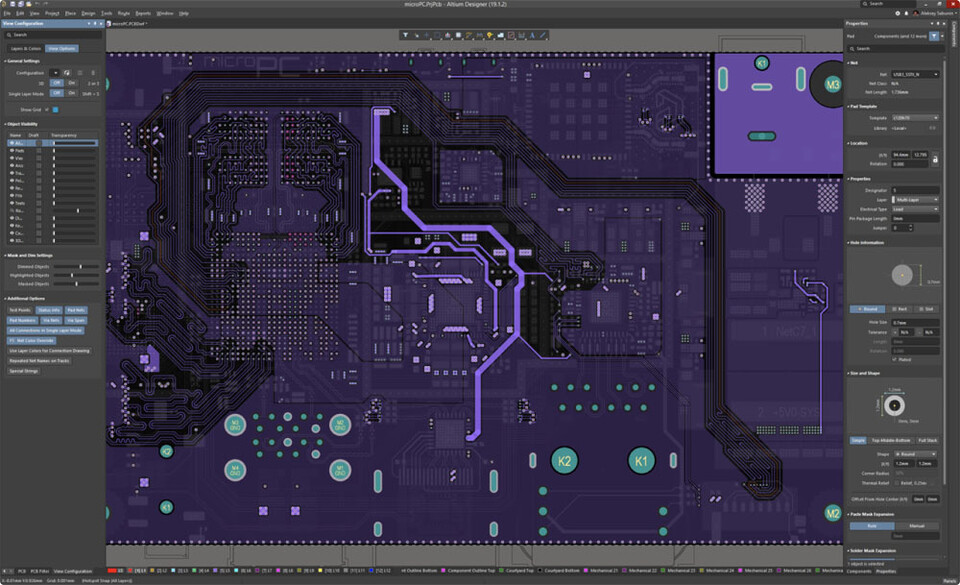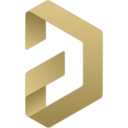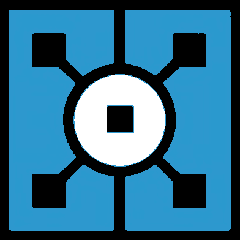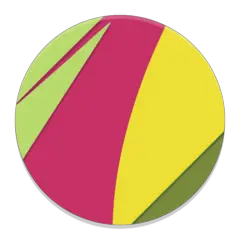|
Note: The shortcuts actually available depend on the type of 3D Model being placed or moved - Extruded, Cylinder, Sphere, or Generic 3D Model. For more information, click the source link found bottom of this article.
|
|||
|
|
Access the 3D Body mode of the Properties panel properties for the 3D body object being placed/moved can be changed on-the-fly |
||
|
|
Flip the 3D body object being placed/moved to the other side of the board |
||
|
|
Toggle the display of the connection lines (ratsnest) while moving the 3D body for a component |
||
|
|
Mirror the 3D body object being placed/moved along the X-axis |
||
|
|
Mirror the 3D body object being placed/moved along the Y-axis |
||
|
|
Rotate the 3D body object being placed/moved counterclockwise around the model's X-axis by 90° |
||
|
Note: This shortcut applies to Generic 3D Model and Cylinder model types only.
|
|||
|
|
Rotate the 3D body object being placed/moved clockwise around the model's X-axis by 90° |
||
|
Note: This shortcut applies to Generic 3D Model and Cylinder model types only.
|
|||
|
|
Rotate the 3D body object being placed/moved counterclockwise around the model's Y-axis by 90° |
||
|
Note: This shortcut applies to Generic 3D Model and Cylinder model types only.
|
|||
|
|
Rotate the 3D body object being placed/moved clockwise around the model's Y-axis by 90° |
||
|
Note: This shortcut applies to Generic 3D Model and Cylinder model types only.
|
|||
|
|
Rotate the 3D body object being placed/moved counterclockwise around the model's Z-axis by 90° |
||
|
Note: This shortcut only applies to the Extruded model type when it is being moved.
|
|||
|
|
Rotate the 3D body object being placed/moved clockwise around the model's Z-axis by 90° |
||
|
Note: This shortcut only applies to the Extruded model type when it is being moved.
|
|||
|
|
Increase the Standoff Height for the 3D body object being placed/moved by one Snap Grid unit |
||
|
Note: This shortcut only applies to the Extruded model type when it is being moved.
|
|||
|
|
Decrease the Standoff Height for the 3D body object being placed/moved by one Snap Grid unit |
||
|
Note: This shortcut only applies to the Extruded model type when it is being moved.
|
|||
Advertisement
|
Note: When interactively routing differential pairs, the AutoRoute On Current Layer and AutoRoute On Multiple Layers modes are not available.
|
|||
|
|
During sliding, use to cycle through the three modes (45 Degree, Mixed, and Rounded). |
||
|
|
Toggle automatic loop removal feature on/off |
||
|
|
Toggle the display of clearance boundaries |
||
|
|
Choose the required track width from available predefined favorite routing widths in the Track mode of the Properties panel |
||
|
|
Choose the required via size from available predefined via sizes, sourced from one or more associated via templates. The Choose Via Sizes dialog will appear with which to do so |
||
|
|
Cycle through routing width sources (User Choice --> Rule Minimum --> Rule Preferred --> Rule Maximum) |
||
|
Note: With User Choice, routing widths are defined and managed in the Favorite Interactive Routing Widths dialog. The rule-based values come from the applicable Differential Pairs Routing rule.
|
|||
|
|
Cycle through via size sources (User Choice --> Rule Minimum --> Rule Preferred --> Rule Maximum) |
||
|
Note: With User Choice, via sizes are defined through via templates - locally to the active PCB document, or through associated Pad Via libraries (*.PvLib).
|
|||
|
|
Cycle through available via patterns (aligned or staggered) |
||
|
|
Cycle through the defined Gap values available for the differential pair being routed, through the applicable Differential Pairs Routing rule (Min Gap --> Preferred Gap --> Max Gap) |
||
|
|
Cycle through the defined Width-Gap value pairings available for the differential pair being routed, through the applicable Differential Pairs Routing rule (Min Width-Min Gap --> Preferred Width-Preferred Gap --> Max Width-Max Gap) |
||
|
|
Switch to the next enabled (and rule-permitted) layer, dropping a via |
||
|
|
Switch to the previous enabled (and rule-permitted) layer, dropping a via |
||
|
|
Switch to the next enabled (and rule-permitted) signal layer, dropping a via |
||
|
|
Switch to routing on the corresponding routing (signal) layer (dropping a via to do so). The number can be obtained from the prefix to the layer name ([n]), on the layer tab at the bottom of the main workspace. Alternatively, the number can be acquired from the pop-up window accessed through the Ctrl + L shortcut. |
||
|
|
Access a pop-up window of available routing layers. Click an entry to switch to that layer (dropping a via to do so). The number to the right of each entry ([n]) can be used to switch to that layer directly, without popping this window. |
||
|
|
When routing from a multi-layer pad or via, switches the layer for the current connection to the next signal layer defined for that pad/via |
||
|
Note: This feature works only when the routing is started from the pads/vias and before the first segments are committed.
|
|||
|
|
Add fanout via, tool immediately waits for next fanout to route and via to place |
||
|
|
Add a via without changing layer |
||
|
|
Enable subnet swapping |
||
|
Note: If no swappable target subnets are available, a message to this effect will be presented in the Messages panel.
|
|||
|
|
Swap target subnet - cycles through all swappable target subnets |
||
|
|
Cycle through the enabled modes as you route |
||
|
|
Cycle through the four different component selection modes |
||
|
Note: In addition, you can use the applicable drop-down field on the PCB Standard toolbar (PCB Editor), or the PCB Lib Standard toolbar (PCB Library Editor) to quickly choose from a set of predefined 3D views when viewing your board (or library components) in 3D.
|
|||
|
|
Change the view of the board (or component) in 3D so that you are looking straight down from above (perpendicular) with 90 Degree (clockwise) rotation in the X-plane |
||
|
Note: In addition, you can use the applicable drop-down field on the PCB Standard toolbar (PCB Editor), or the PCB Lib Standard toolbar (PCB Library Editor) to quickly choose from a set of predefined 3D views when viewing your board (or library components) in 3D.
|
|||
|
|
Change the view of the board (or component) in 3D so that you are looking at the board from an orthogonal perspective |
||
|
Note: In addition, you can use the applicable drop-down field on the PCB Standard toolbar (PCB Editor) or the PCB Lib Standard toolbar (PCB Library Editor) to quickly choose from a set of predefined 3D views when viewing your board (or library components) in 3D.
|
|||
|
|
Toggle a board that has flexible areas between its flattened state (no Bending Line settings applied) and its folded state (all Bending Line settings applied) |
||
|
|
Access the 3D rotational sphere. With the sphere displayed, Right-Click and drag to change the orientation of the view |
||
|
|
Copies the current view in the main design workspace to the clipboard in bitmap format (*.bmp). You have control over the resolution of the copied image via the 3D Snapshot Resolution dialog |
||
Advertisement |
|||
|
|
Change the view of the board (or component) in 3D so that you are looking at the board from the top side |
||
|
|
Rotate selected objects about a specified rotation 'base' point in the current document |
||
|
|
Align layers in the current document based on chosen layer objects |
||
|
|
Create a new layer by merging existing layers in the current document |
||
|
|
Select design objects within a user-defined area. The objects do not have to be wholly inside the defined boundaries of the area |
||
|
|
Reselect the objects that were part of the previous selection |
||
|
|
Select objects in the workspace one at a time |
||
|
|
Toggle the Flash/Point selection mode On or OFF |
||
|
|
Toggle the Draws selection mode On or OFF |
||
|
|
Copy selected objects and place them in a defined array within the current document |
||
|
|
Change the view of the board (or component) in 3D so that you are looking at the board from the left edge |
||
|
|
Change the view of the board (or component) in 3D so that you are looking at the board from the right edge |
||
|
|
Rotate the view of the board (or component) in 3D 30 degrees left |
||
|
|
Rotate the view of the board (or component) in 3D 30 degrees right |
||
|
|
Rotate the view of the board (or component) in 3D 30 degrees up |
||
|
|
Rotate the view of the board (or component) in 3D 30 degrees down |
||
|
|
Move the view of the board (or component) in 3D 500mil left |
||
|
|
Move the view of the board (or component) in 3D 500mil right |
||
|
|
Move the view of the board (or component) in 3D 500mil up |
||
|
|
Move the view of the board (or component) in 3D 500mil down |
||
|
|
Change the view of the board (or component) in 3D so that you are looking at the board from an orthogonal perspective |
||
|
|
Access the View Configuration panel in which you can configure how the board is rendered in 3D |
||
|
|
Toggle measurement units between metric and imperial - the displayed measurement values will update accordingly |
||
|
|
As you move the cursor over a 3D object, use to select a specific face of that object |
||
|
|
Clear all currently displayed measurements in the 3D workspace |
||
|
Sub-menu
|
|||
|
|
Open the Align sub-menu |
||
|
|
Open the Toolbars sub-menu |
||
|
|
Open a pop-up menu with Snap Grid commands |
||
|
|
Open the Component Placement sub-menu |
||
|
|
Open the Jump sub-menu |
||
|
|
Open the Panels sub-menu |
||
|
|
Open the Move sub-menu |
||
|
|
Open a pop-up menu of Connection/Jumper display commands |
||
|
|
Open the right-click Options sub-menu |
||
|
|
Open the Select sub-menu |
||
|
|
Open the Route sub-menu |
||
|
|
Open the DeSelect sub-menu |
||
|
|
Open the right-click Filter sub-menu |
||
|
|
Open a pop-up menu with zoom commands |
||
|
Batch Component Editing Mode
|
|||
|
|
Clear the content of the currently selected editable cells and copy that content to the clipboard |
||
|
|
Copy the content of the currently selected editable cells to the clipboard |
||
|
|
Paste content from the clipboard into the currently selected editable cells within the component definitions region of the document |
||
|
|
Clear the content of the currently selected (and editable) cells in the component definitions region of the document |
||
|
|
Remove the currently selected component definitions from the document |
||
|
|
Cut the selected component definition(s) from the document and add them to the clipboard |
||
|
|
Copy the selected component definition(s) to the clipboard |
||
|
|
Clone the selected component definition |
||
|
|
Paste one (or more) component definitions from the clipboard into the component definitions region of the document |
||
|
|
Access the Manufacturer Part Search dialog in which you can browse for required components across enabled supplier's online part databases. Selected components will be used to create one or more new component definitions in the active Managed Component document |
||
|
|
Refresh the document |
||
|
Note: This is useful if, for any reason, you have lost connection with the target server. It ensures model links are refreshed and also, if the CmpLib is referencing a Component Template, it allows the data defined in that template to be brought in again, which is very helpful if you have inadvertently cleared content from read-only cells!
|
|||
|
|
Restore the current document to its state previous to the last operation. Multiple levels of undo are supported |
||
|
|
Restore changes made by the Undo feature in the current document. Multiple levels of Redo are supported |
||
|
Single Component Editing Mode
|
|||
|
|
Opens the Manufacturer Part Search dialog in order to search for components and add supplier information to a component. |
||
|
|
Refresh the component editor |
||
|
|
Clear the contents of the Name or Description field |
||
|
|
Copy the content of the Name or Description field onto the clipboard |
||
|
|
Paste content from the clipboard into the Name or Description field |
||
|
|
Clear the selected output(s) from the current Output Job Configuration file and copy them to the OutputJob Editor's clipboard |
||
|
|
Clear the selected output container, or print job, from the current Output Job Configuration file and copy it to the OutputJob Editor's clipboard |
||
|
|
Copy the selected output(s) from the current Output Job Configuration file to the OutputJob Editor's clipboard |
||
|
|
Copy the selected output container, or print job, from the current Output Job Configuration file to the OutputJob Editor's clipboard |
||
|
|
Place the contents of the OutputJob Editor's clipboard into the active Output Job Configuration file |
||
|
|
Place the output container/print job from the OutputJob Editor's clipboard, into the relevant output media section of the active Output Job Configuration file |
||
|
|
Make an identical copy (duplicate) of the selected output |
||
|
|
Remove the selected output(s) |
||
|
|
Remove the selected output container or print job |
||
| + |
One or more selected applicable (printable) outputs into the Hard Copy region to create a new Print Job. The output(s) will automatically be linked |
||
| + |
One or more selected applicable outputs into the Output Containers region to create a new PDF output container. The output(s) will automatically be linked |
||
| + |
One or more selected PCB3D Video outputs into the Output Containers region to create a new Video output container. The output(s) will automatically be linked |
||
| + |
One or more selected applicable outputs into the Output Containers region to create a new Folder Structure output container. The output(s) will automatically be linked |
||
|
|
Launch the associated dialog (where available) for the selected output in which you can define exactly how, and what, you wish to be generated |
||
|
|
Enable all selected outputs connecting them to the currently selected output container or print job |
||
|
|
Disable all selected outputs disconnecting them from the currently selected output container or print job |
||
|
|
Configure the properties of the currently selected output container or print job |
||
|
|
Generate the outputs that are enabled and linked to the selected print job |
||
|
|
Generate the outputs that are enabled and linked to the selected PDF output container |
||
|
|
Generate the outputs that are enabled and linked to the selected Video output container |
||
|
|
Generate the outputs that are enabled and linked to the selected Folder Structure output container |
|
|
Print the currently active Draftsman document |
||
|
|
Restore the active Draftsman document to its state previous to the last operation. Multiple levels of undo are supported |
||
|
|
Restore changes made by the Undo feature in the active Draftsman document. Multiple levels of redo are supported |
||
|
|
Clear the selected object(s) from the active Draftsman document and copy them to the Draftsman Editor's clipboard |






What is your favorite Altium Designer hotkey? Do you have any useful tips for it? Let other users know below.
1106799
498270
411259
366077
306918
277367
23 hours ago
Yesterday
Yesterday
1 days ago
1 days ago Updated!
2 days ago Updated!
Latest articles